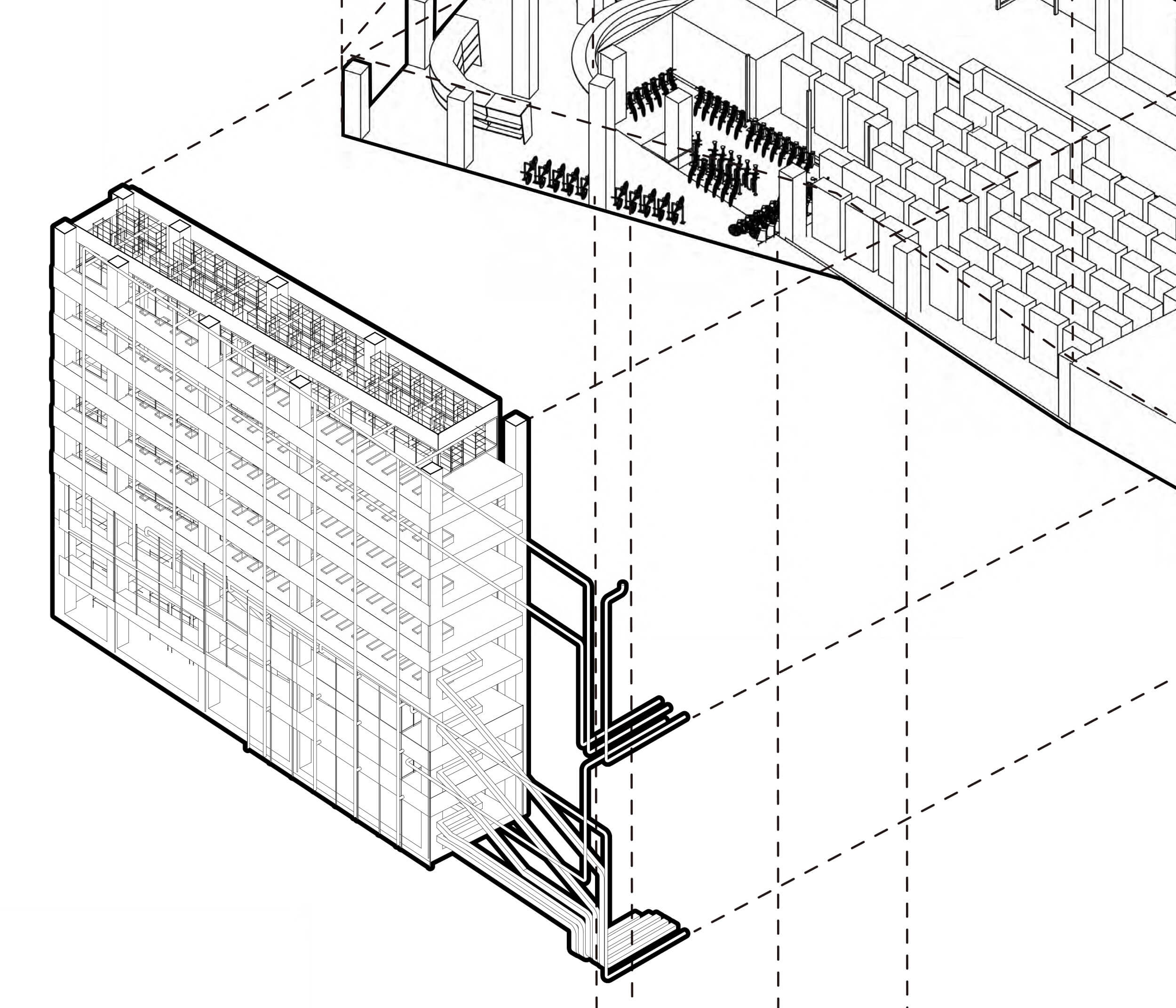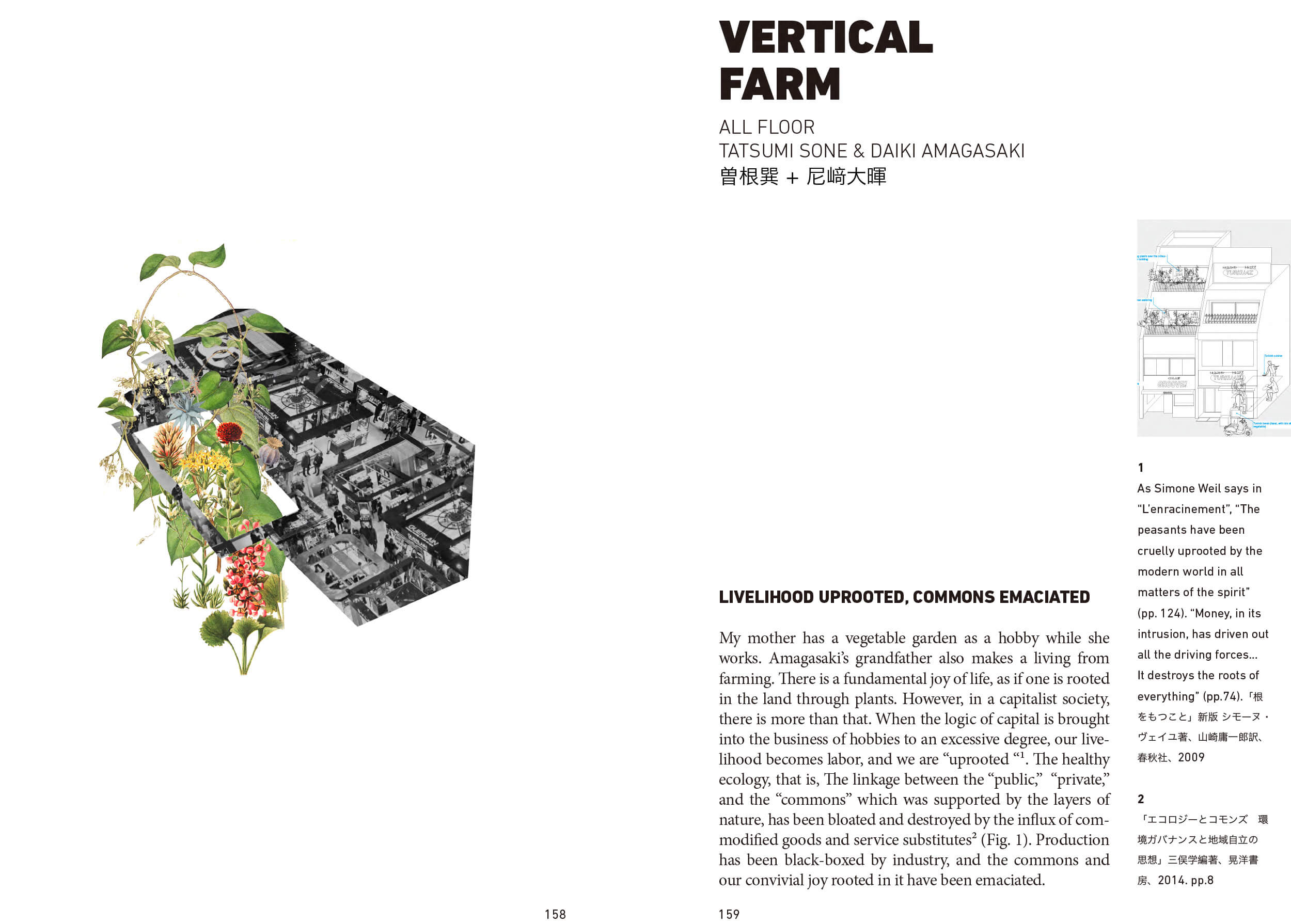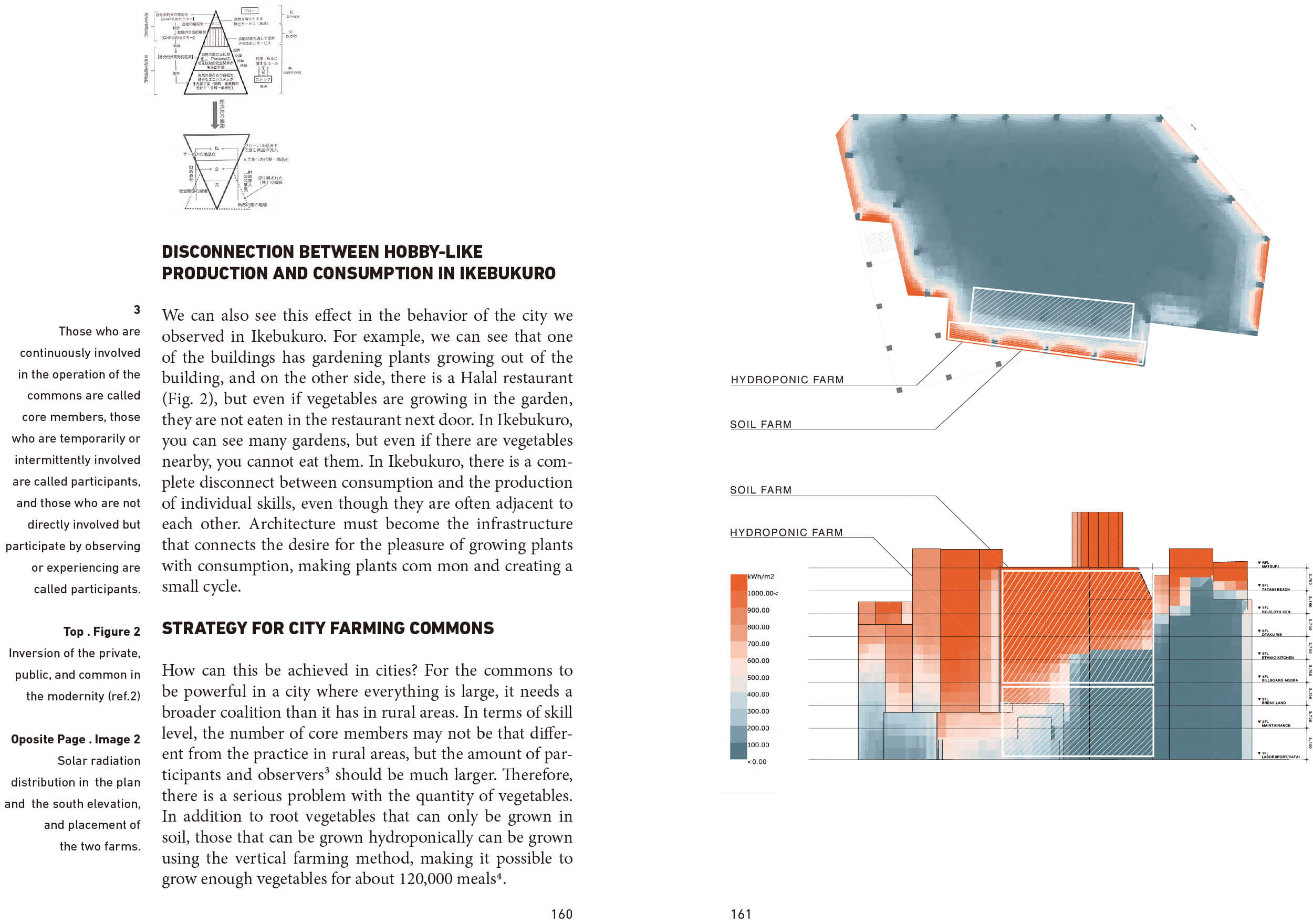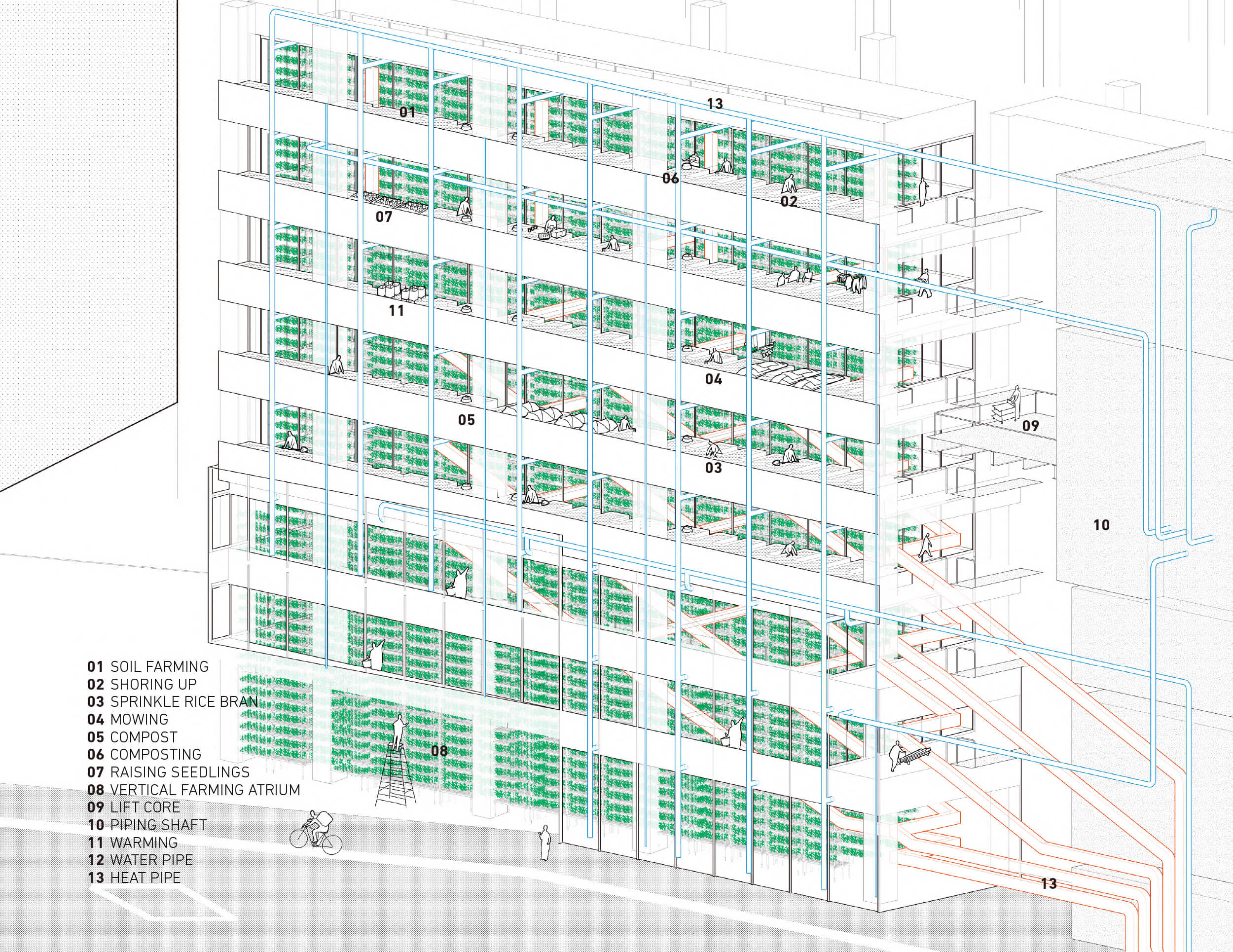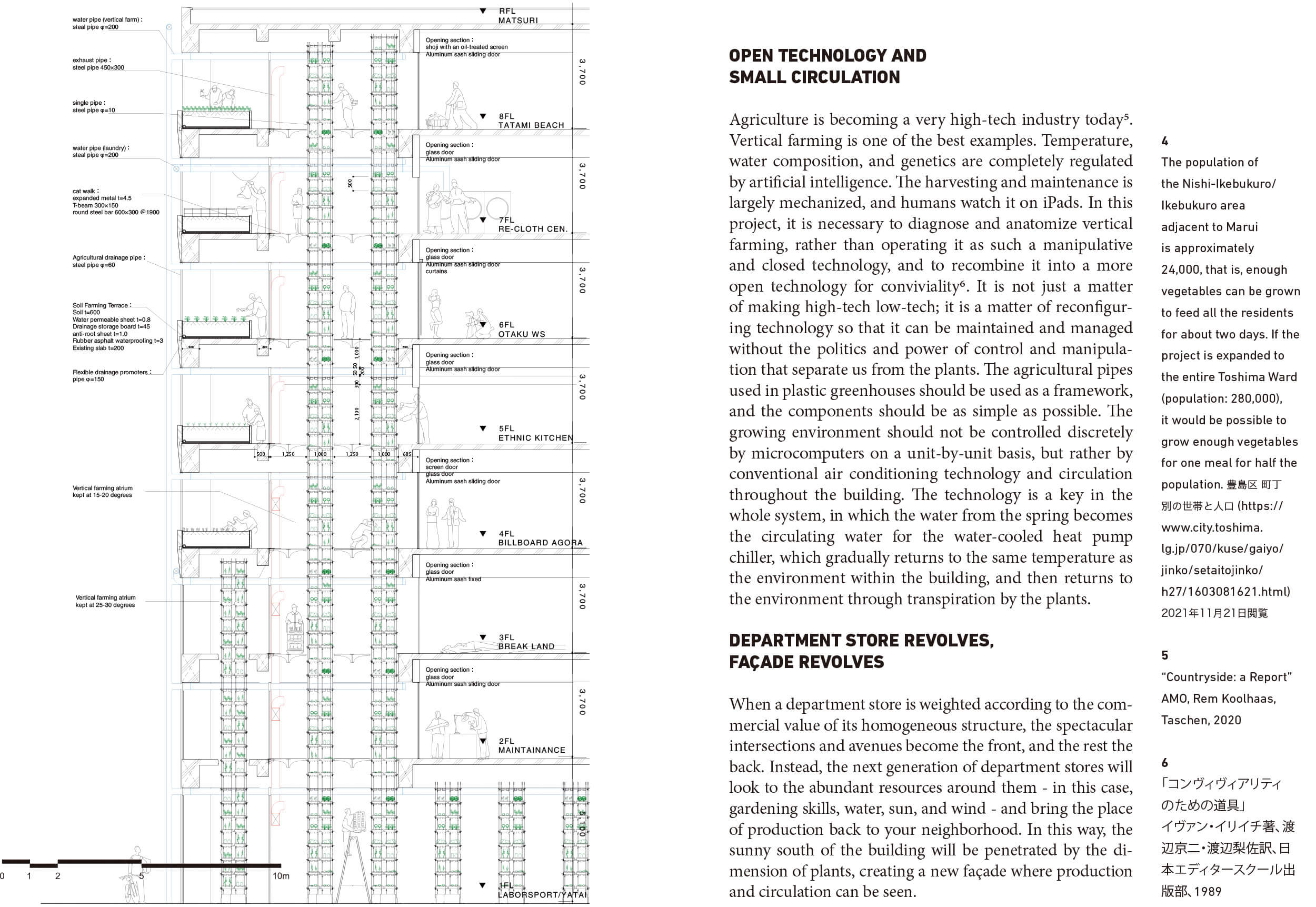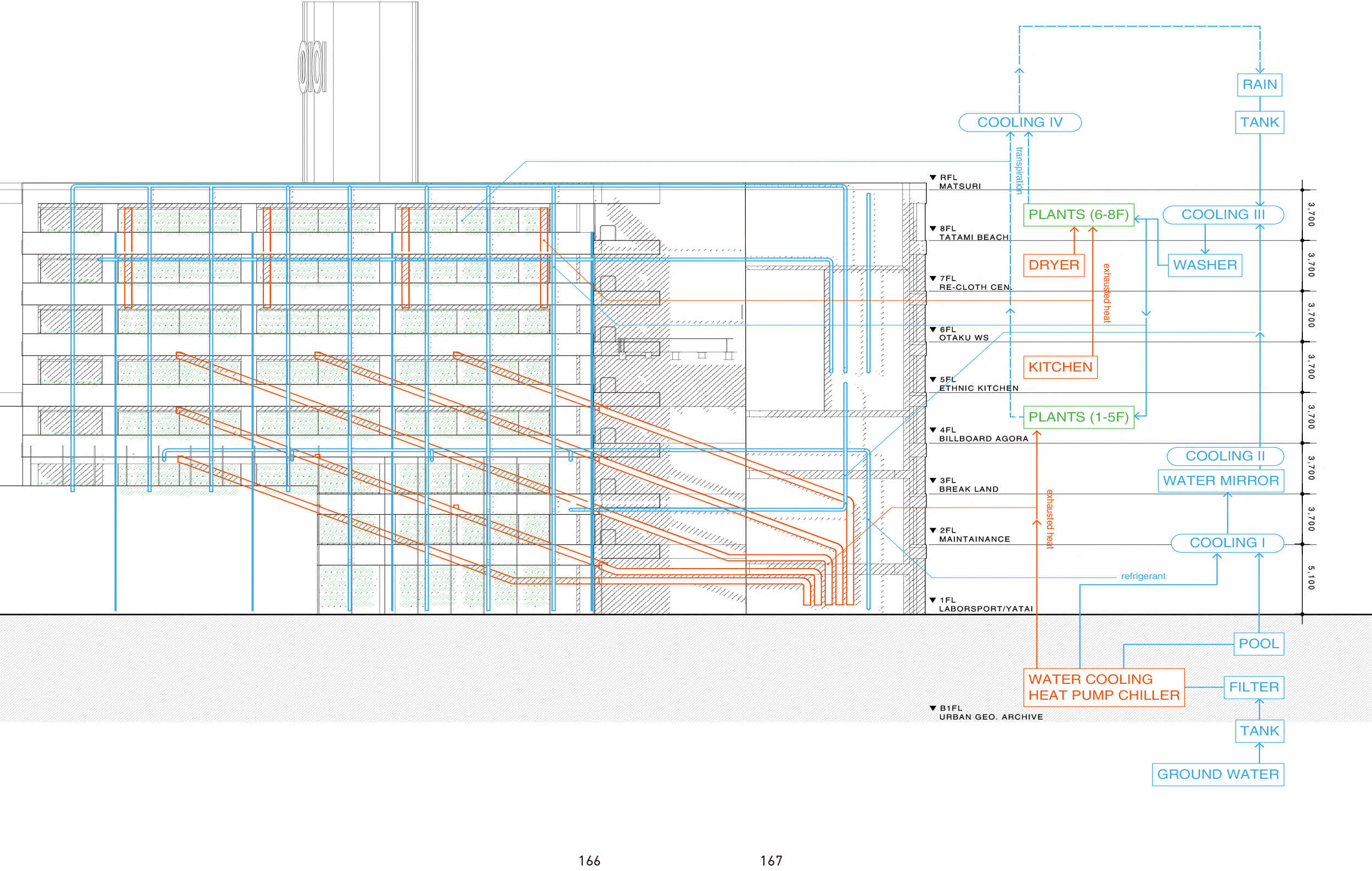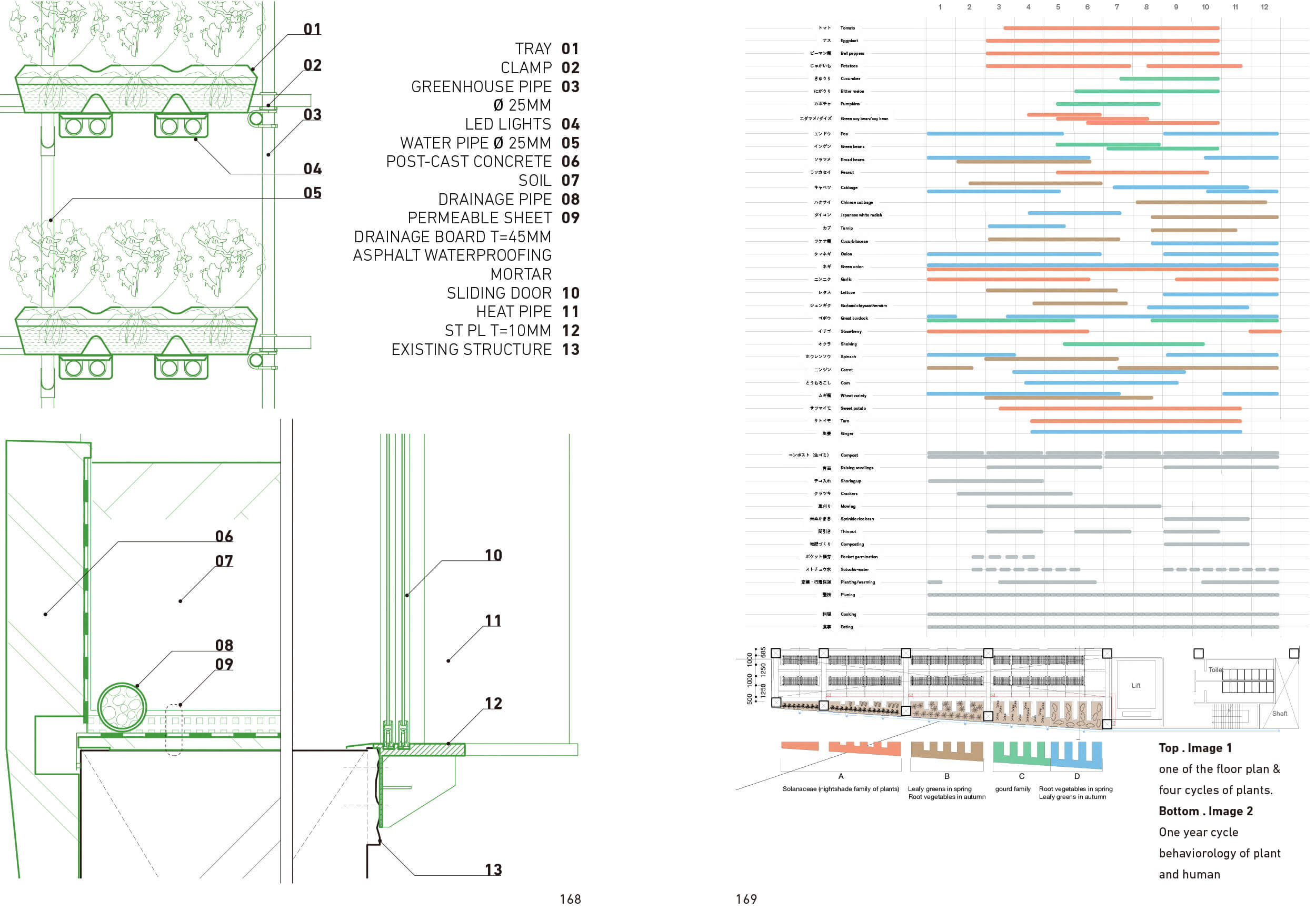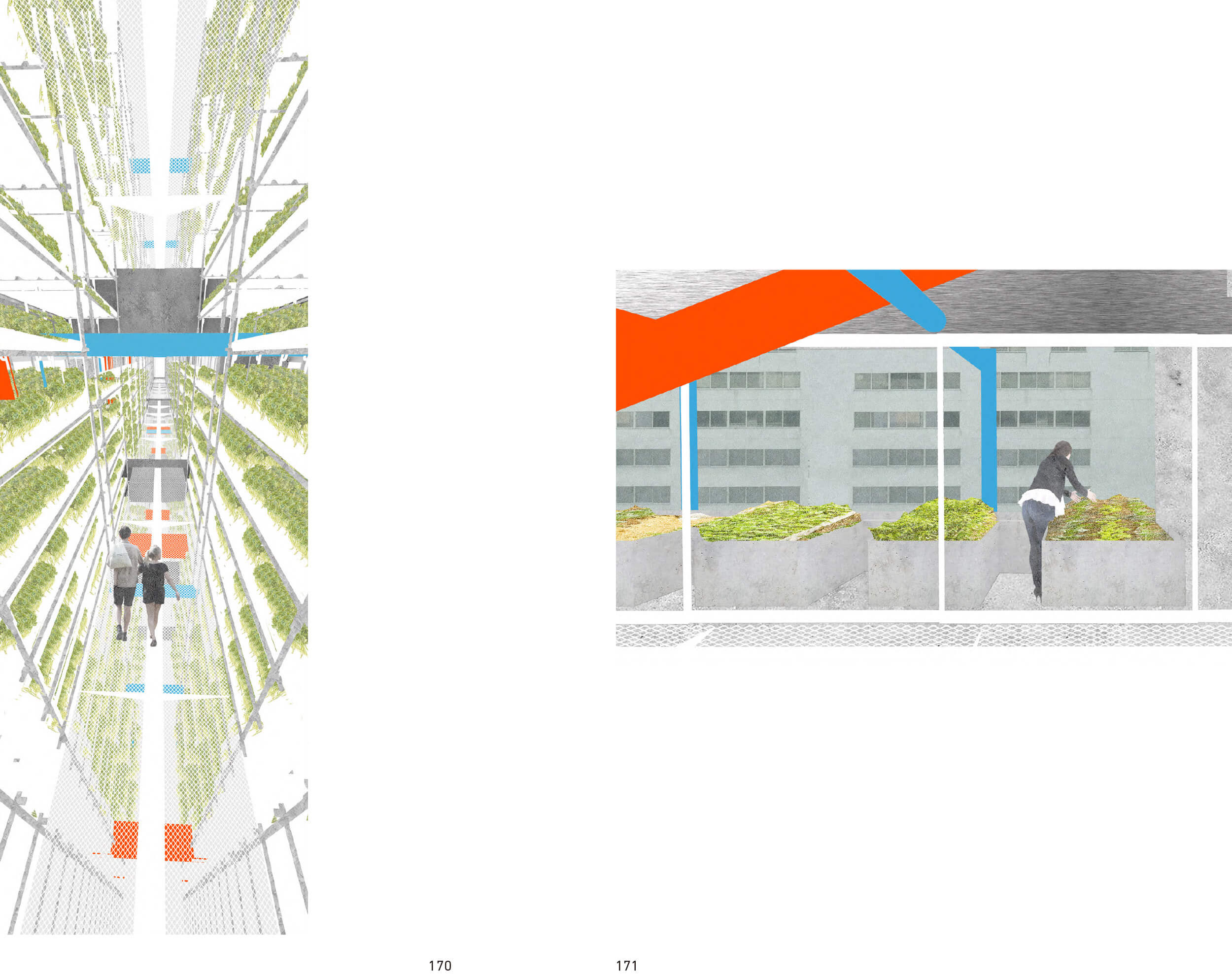LIVELIHOOD UPROOTED, COMMONS EMACIATED
My mother has a vegetable garden as a hobby while she works. Amagasaki’s grandfather also makes a living from farming. There is a fundamental joy of life, as if one is rooted in the land through plants. However, in a capitalist society, there is more than that. When the logic of capital is brought into the business of hobbies to an excessive degree, our live- lihood becomes labor, and we are “uprooted “1. The healthy ecology, that is, The linkage between the “public,” “private,” and the “commons” which was supported by the layers of nature, has been bloated and destroyed by the influx of com- modified goods and service substitutes2 (Fig. 1). Production has been black-boxed by industry, and the commons and our convivial joy rooted in it have been emaciated.
DISCONNECTION BETWEEN HOBBY-LIKE PRODUCTION AND CONSUMPTION IN IKEBUKURO
We can also see this effect in the behavior of the city we observed in Ikebukuro. For example, we can see that one of the buildings has gardening plants growing out of the building, and on the other side, there is a Halal restaurant (Fig. 2), but even if vegetables are growing in the garden, they are not eaten in the restaurant next door. In Ikebukuro, you can see many gardens, but even if there are vegetables nearby, you cannot eat them. In Ikebukuro, there is a com- plete disconnect between consumption and the production of individual skills, even though they are often adjacent to each other. Architecture must become the infrastructure that connects the desire for the pleasure of growing plants with consumption, making plants com mon and creating a small cycle.
STRATEGY FOR CITY FARMING COMMONS
How can this be achieved in cities? For the commons to be powerful in a city where everything is large, it needs a broader coalition than it has in rural areas. In terms of skill level, the number of core members may not be that differ- ent from the practice in rural areas, but the amount of par- ticipants and observers3 should be much larger. Therefore, there is a serious problem with the quantity of vegetables. In addition to root vegetables that can only be grown in soil, those that can be grown hydroponically can be grown using the vertical farming method, making it possible to grow enough vegetables for about 120,000 meals4.
OPEN TECHNOLOGY AND SMALL CIRCULATION
Agriculture is becoming a very high-tech industry today5. Vertical farming is one of the best examples. Temperature, water composition, and genetics are completely regulated by artificial intelligence. The harvesting and maintenance is largely mechanized, and humans watch it on iPads. In this project, it is necessary to diagnose and anatomize vertical farming, rather than operating it as such a manipulative and closed technology, and to recombine it into a more open technology for conviviality6. It is not just a matter of making high-tech low-tech; it is a matter of reconfigur- ing technology so that it can be maintained and managed without the politics and power of control and manipula- tion that separate us from the plants. The agricultural pipes used in plastic greenhouses should be used as a framework, and the components should be as simple as possible. The growing environment should not be controlled discretely by microcomputers on a unit-by-unit basis, but rather by conventional air conditioning technology and circulation throughout the building. The technology is a key in the whole system, in which the water from the spring becomes the circulating water for the water-cooled heat pump chiller, which gradually returns to the same temperature as the environment within the building, and then returns to the environment through transpiration by the plants.
DEPARTMENT STORE REVOLVES, FAÇADE REVOLVES
When a department store is weighted according to the com- mercial value of its homogeneous structure, the spectacular intersections and avenues become the front, and the rest the back. Instead, the next generation of department stores will look to the abundant resources around them – in this case, gardening skills, water, sun, and wind – and bring the place of production back to your neighborhood. In this way, the sunny south of the building will be penetrated by the di- mension of plants, creating a new façade where production and circulation can be seen.
